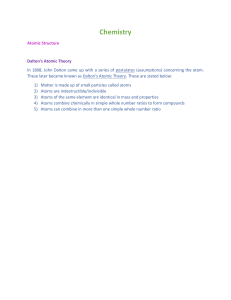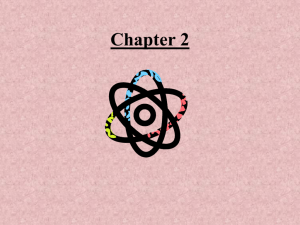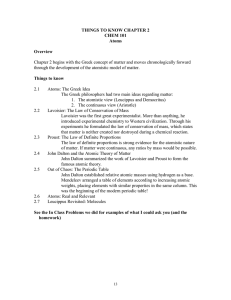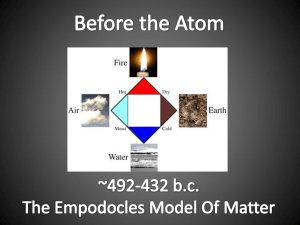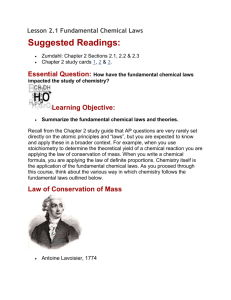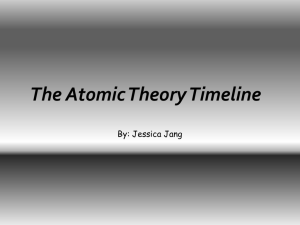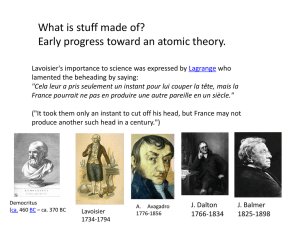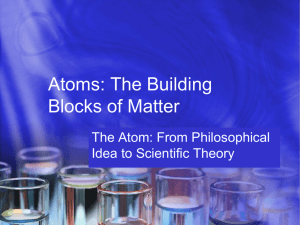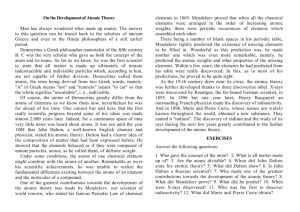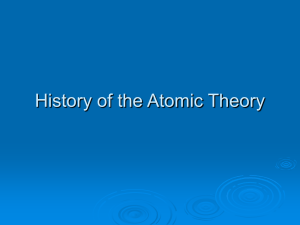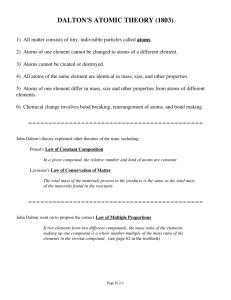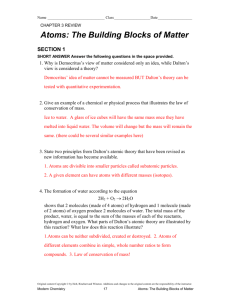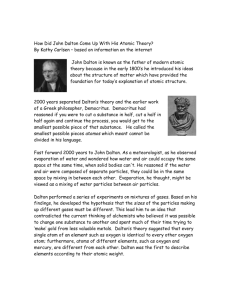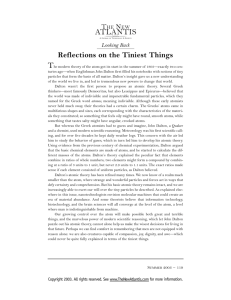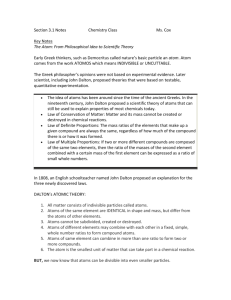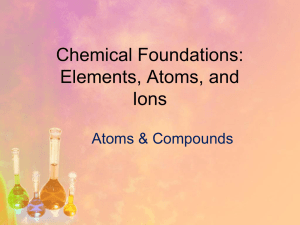JOHN DALTON'S ATOMIC THEORY
advertisement
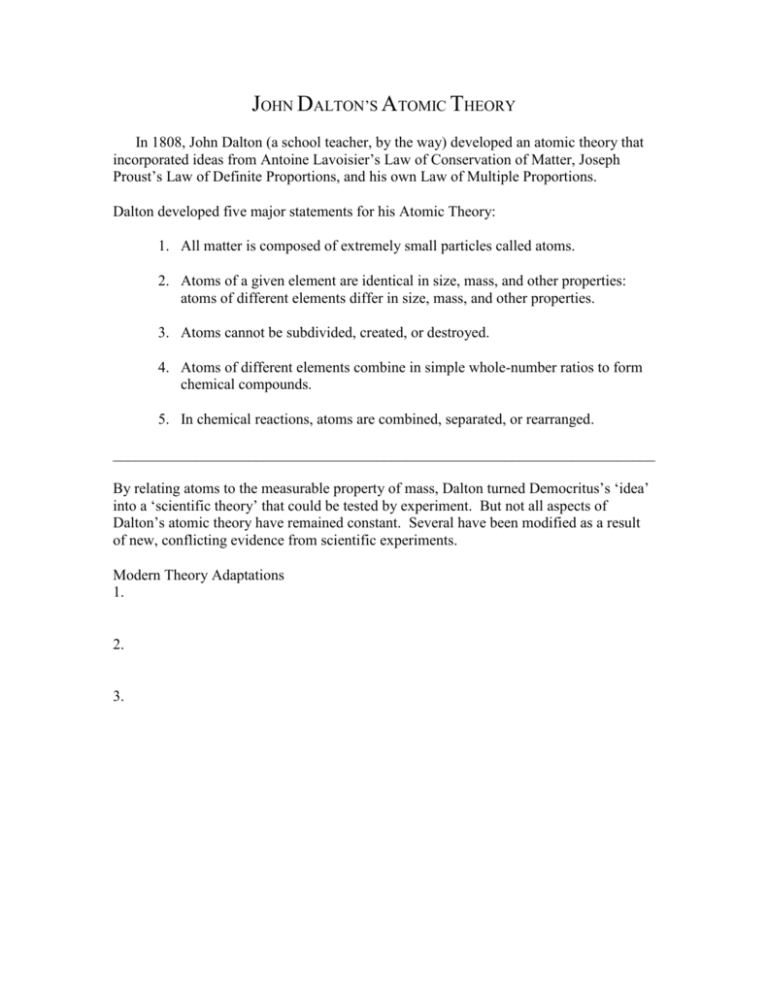
JOHN DALTON’S ATOMIC THEORY In 1808, John Dalton (a school teacher, by the way) developed an atomic theory that incorporated ideas from Antoine Lavoisier’s Law of Conservation of Matter, Joseph Proust’s Law of Definite Proportions, and his own Law of Multiple Proportions. Dalton developed five major statements for his Atomic Theory: 1. All matter is composed of extremely small particles called atoms. 2. Atoms of a given element are identical in size, mass, and other properties: atoms of different elements differ in size, mass, and other properties. 3. Atoms cannot be subdivided, created, or destroyed. 4. Atoms of different elements combine in simple whole-number ratios to form chemical compounds. 5. In chemical reactions, atoms are combined, separated, or rearranged. ________________________________________________________________________ By relating atoms to the measurable property of mass, Dalton turned Democritus’s ‘idea’ into a ‘scientific theory’ that could be tested by experiment. But not all aspects of Dalton’s atomic theory have remained constant. Several have been modified as a result of new, conflicting evidence from scientific experiments. Modern Theory Adaptations 1. 2. 3.
